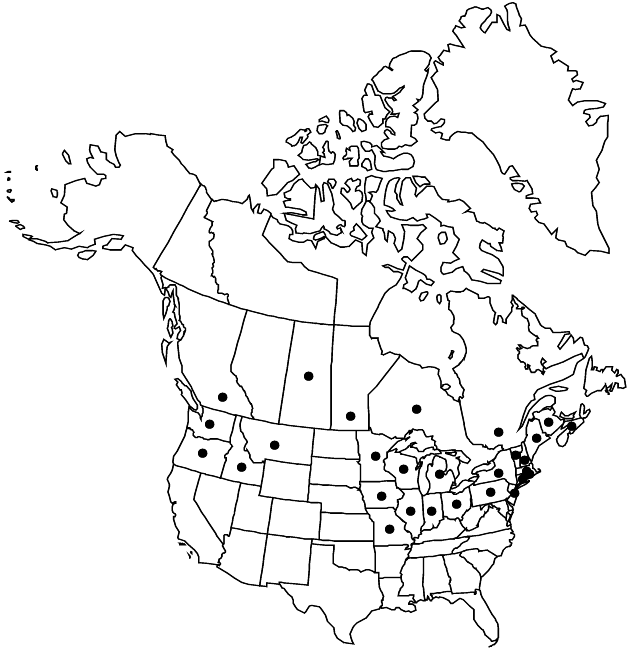Difference between revisions of "Bidens beckii"
Neue Entd. 2: 135. 1821.
FNA>Volume Importer |
imported>Volume Importer |
||
| (2 intermediate revisions by 2 users not shown) | |||
| Line 8: | Line 8: | ||
}} | }} | ||
|common_names=Bident de Beck | |common_names=Bident de Beck | ||
| + | |special_status={{Treatment/ID/Special_status | ||
| + | |code=E | ||
| + | |label=Endemic | ||
| + | }} | ||
|basionyms= | |basionyms= | ||
|synonyms={{Treatment/ID/Synonym | |synonyms={{Treatment/ID/Synonym | ||
| Line 30: | Line 34: | ||
|discussion=<p>M. L. Roberts (1985) presented a strong case for treating <i>Bidens beckii</i> as Megalodonta beckii.</p> | |discussion=<p>M. L. Roberts (1985) presented a strong case for treating <i>Bidens beckii</i> as Megalodonta beckii.</p> | ||
|tables= | |tables= | ||
| − | |references= | + | |references={{Treatment/Reference |
| + | |id=roberts1985a | ||
| + | |text=Roberts, M. L. 1985. The cytology, biology and systematics of Megalodonta beckii (Compositae). Aquat. Bot. 21: 99–110. | ||
| + | }} | ||
}}<!-- | }}<!-- | ||
| Line 47: | Line 54: | ||
|elevation=0–300+ m | |elevation=0–300+ m | ||
|distribution=B.C.;Man.;N.B.;N.S.;Ont.;Que.;Sask.;Conn.;Idaho;Ill.;Ind.;Iowa;Maine;Mass.;Mich.;Minn.;Mo.;Mont.;N.H.;N.J.;N.Y.;Ohio;Oreg.;Pa.;R.I.;Vt.;Wash.;Wis. | |distribution=B.C.;Man.;N.B.;N.S.;Ont.;Que.;Sask.;Conn.;Idaho;Ill.;Ind.;Iowa;Maine;Mass.;Mich.;Minn.;Mo.;Mont.;N.H.;N.J.;N.Y.;Ohio;Oreg.;Pa.;R.I.;Vt.;Wash.;Wis. | ||
| − | |reference= | + | |reference=roberts1985a |
|publication title=Neue Entd. | |publication title=Neue Entd. | ||
|publication year=1821 | |publication year=1821 | ||
| − | |special status= | + | |special status=Endemic |
| − | |source xml=https:// | + | |source xml=https://bitbucket.org/aafc-mbb/fna-data-curation/src/2e0870ddd59836b60bcf96646a41e87ea5a5943a/coarse_grained_fna_xml/V19-20-21/V21_506.xml |
|tribe=Asteraceae tribe Heliantheae | |tribe=Asteraceae tribe Heliantheae | ||
|subtribe=Asteraceae (tribe Heliantheae) subtribe Coreopsidinae | |subtribe=Asteraceae (tribe Heliantheae) subtribe Coreopsidinae | ||
Latest revision as of 20:12, 5 November 2020
Perennials (perhaps flowering first year) to 200+ cm (aquatics). Leaves sessile; submersed blades multifid (2–3+-pinnatisect), ultimate lobes filiform, mostly 0.1–0.3 mm diam.; aerial blades ovate to lanceolate, 10–45+ × 5–20+ mm, bases cuneate, margins pectinately incised to serrate or entire, not ciliate, apices obtuse to acuminate or attenuate, faces glabrous. Heads usually borne singly. Peduncles (10–)20–100 mm. Calyculi of 5–6 usually spreading, oblong to obovate bractlets 5–8 mm, margins entire, not ciliate, abaxial faces usually glabrous. Involucres ± hemispheric, 7–12 × 12–15 mm. Phyllaries 7–8+, ovate, 7–10 mm. Ray florets 8; laminae yellow, 10–15 mm. Disc florets 10–30+; corollas pale yellow, 5–6 mm. Cypselae (outer and inner ± alike) yellowish to greenish brown, nearly terete or weakly 4-angled, ± linear, 10–15 mm, margins not barbed or ciliate, apices truncate, faces smooth or ± striate, glabrous; pappi of 2(–6) divergent to patent, retrorsely barbed (on distal 1/4 or so) awns 13–25(–40) mm. 2n = 26.
Phenology: Flowering Jul–Sep.
Habitat: Still or slow-moving waters
Elevation: 0–300+ m
Distribution

B.C., Man., N.B., N.S., Ont., Que., Sask., Conn., Idaho, Ill., Ind., Iowa, Maine, Mass., Mich., Minn., Mo., Mont., N.H., N.J., N.Y., Ohio, Oreg., Pa., R.I., Vt., Wash., Wis.
Discussion
M. L. Roberts (1985) presented a strong case for treating Bidens beckii as Megalodonta beckii.